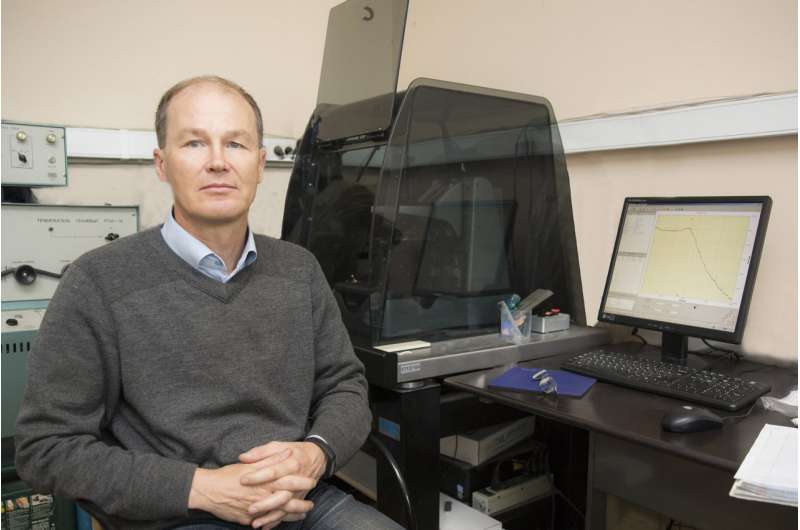Scientists test new material for neurocomputers

Scientists from the National Research Nuclear University MEPhI (Moscow Engineering Physics Institute), working in cooperation with researchers from the Russian Academy of Sciences, have proposed new materials in which the bipolar effect of resistive switchings (BERS) can be realized. Significantly, these materials could serve as the basis for developing a computer based on memristors that can store and process data in a way similar to human brain neurons. The results of the research were published in Materials Letters.
The BERS phenomenon is a popular area of research in the fundamental and the applied sciences. It can be used for developing nonvolatile two-terminal memory cells, as well as for memristors, the fourth fundamental element in electronics. Memristors could serve as the basis for a new approach to data processing, so-called membrane computing.
Membrane computing is a new method of data processing in which short-term (RAM) and long-term (ROM) memory are operated by elements similar to neurons in the human brain. The effect of resistive switching occurs when an external electric field changes a material's conductivity by several degrees, thereby realizing metastable high-resistive and low-resistive conditions. If the nature of the switching depends on the direction of the electric field, the effect is called bipolar.
The physical mechanism of the switching itself depends on the material type. This may include the forming of conductive channels via the migration of metal ions, the forming of Schottky barriers, metal–insulator phase transitions, and other processes.
MEPhI is currently searching for new materials that can demonstrate BERS. Earlier, researchers found that BERS can be observed in systems with a strong electron correlation, e.g., materials with high magnetoresistance and high-temperature superconductors.
Eventually, the scientists decided in favor of epitaxial fields that form on the surface of a single-crystalline substrate of strontium titanate (epitaxy is a regular and organized growth of one crystalline substance on another). The researchers proved that these fields can be used to create memristors for a new generation of computers.
"The innovation in this research is in applying the lithography which allows developing the technology for miniaturization of resistive memory elements," said Andrei Ivanov, associate professor of the Solid-State Physics and Nanosystems Department at MEPhI.
More information: N.A. Tulina et al. X-ray photoelectron spectroscopy studies of electronic structure of Nd 2−x Ce x CuO 4−y and YBa 2 Cu 3 O 7−y epitaxial film surfaces and resistive switchings in high temperature superconductor-based heterostructures, Materials Letters (2017). DOI: 10.1016/j.matlet.2017.05.091
Journal information: Materials Letters
Provided by National Research Nuclear University




















